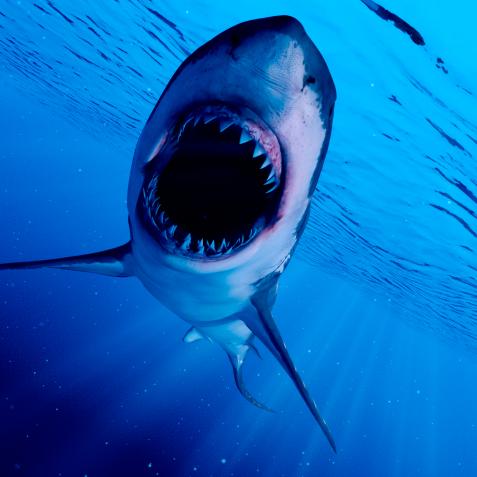
NASA's Goddard Space Flight Center
Astronomers See Flashes from Behind a Black Hole

Want to see what’s behind a black hole? Easy. You just…stare at it. The whole thing is pretty weird to contemplate, but an excellent example of the space-bending (and mind-bending) powers of black holes.
Typically, you don’t expect to see through a black hole. And truly, you can’t. Every black hole is surrounded by an event horizon, which is the ultimate one-way street. Once something – anything, really, even light itself – crosses the event horizon of a black hole, it can never, ever return back into the surrounding universe. It is quite literally lost to us forever.
So if there’s, say, a galaxy on the far side of a black hole, we won’t get to see it directly. That’s because any light coming from that galaxy and headed in our direction will get swallowed by the black hole, and that’s that.
So imagine the surprise when Stanford astrophysicist Dan Wilkins and collaborators realized that they were seeing light coming from behind a black hole.
They were studying flares of X-rays coming from a supermassive black hole centered in the galaxy known as I Zwicky I. Those flares come from a region around the black hole called the corona. This corona is made of super-heated particles that are either trapped in orbit around the black or on their way down below the event horizon. But before they plunge to their doom, never to be seen again, they become so energized that they emit flashes of X-ray radiation.

NASA’s Goddard Space Flight Center; ESA/Gaia/DPAC
This simulation of a supermassive black hole shows how it distorts the starry background and captures light, producing a black hole silhouettes.
We see these kinds of X-ray flares all the time. But Wilkins and his collaborators noticed that some of the flares had different wavelengths, and were slightly delayed relative to the normal flashes.
Black hole based lightbulb moment: the X-ray flashes were coming from the part of the corona behind the black hole.
But if they were emitted behind the black hole, and headed away from us, how did those X-ray signals make it to Earth?
It’s gravity. A lot of gravity.

NASA
All gravitating objects can bend the path of light. Our sun does it just a tiny bit, and it was observations of that small deflection of light that first validated Einstein’s theory of general relativity. Since then, astronomers have observed this deflection of light around throughout the universe.
But this is the first time that the bending of light has taken on such an extreme character. We’re talking about a complete 180-degree reversal. A beam of X-rays was so deflected by the presence of the black hole that it went in the exact opposite direction that it intended.
Like I said, extreme.
Dive Deeper into the Cosmos
Journey Through the Cosmos in an All-New Season of How the Universe Works
The new season premieres March 24 on Science Channel and streams on discovery+.




















